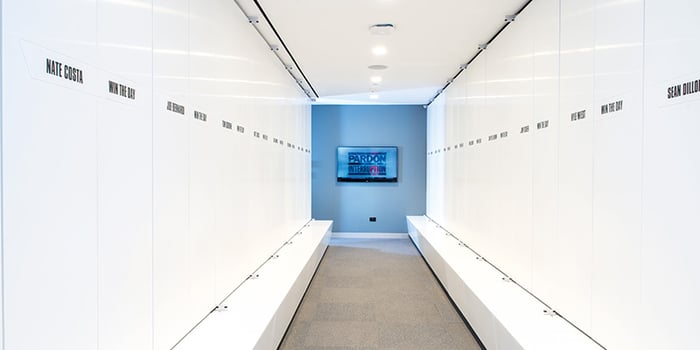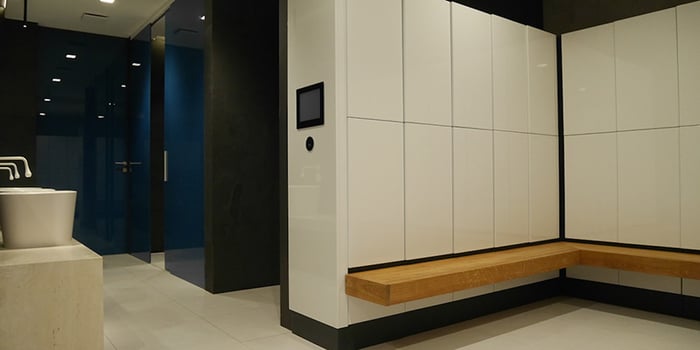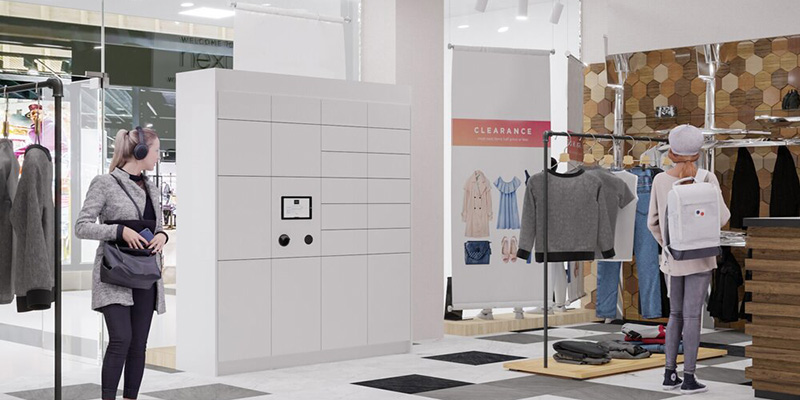We always knew there were germs out there. But 2020 taught us to think twice about what we touch. Hand sanitizing stations are all over the place now. Still, people want to avoid contact with items in shared spaces. Touch-less lockers can provide peace of mind in many environments. By adding smart technology and antimicrobial finishes, the benefits add up for any company.
Touch-less lockers can make a difference in many environments including:
- Hybrid workplaces
- Industrial warehouses
- Campus buildings
- Museums and galleries
- Libraries
- Healthcare settings
- Gyms
- Malls
- Entertainment venues
How Do Touch-less Lockers Work?
Touch-less lockers are unlike the key lock or battery-operated lockers you might envision. Contactless lockers are manufactured to gently pop open the door when the user wants access. There are several options for opening touch-less smart lockers including:
- Presenting a student, employee or visitor RFID badge or fob
- Using a connected smart locker WiFi app on a smartphone
- Using a HID mobile credential on your smartphone or wearable
Once the user has stowed their stuff or retrieved their belongings, the locker can be closed again with the touch of an elbow. Watch how this works here.
The lockers can be self-assigned for short-term use or administratively assign lockers to specific users. They might even do both, assign a locker bank or just a few lockers for guest use and the rest for assigned users. And as the needs change, so can the locks by changing configurations easily in the smart locker software.
That’s not the only benefit for building owners of touch-less lockers. Cleanliness has always been a priority, of course. But, as building sanitation practices are enhanced, the smart locker system technology also offers advantages.
Touch-less Lockers Facilitate Hygiene
We don’t like to spend too much time thinking about it, but traditional lockers were like a petri dish of germs. Different people would be touching the key or touchpad mechanism. These traditional lockers with the locks mounted to the door make it difficult to clean with all the grooves and crevices.

These clean touch-less lockers have no locks mounted to the door making it much easier to sanitize regularly. A connected locker offers further benefits too. For instance, building administrators gain the ability to:
- Program unassigned lockers to support social distancing
- Decommission a locker after use until it is thoroughly cleaned
- Trace which lockers were used by whom in the event of an outbreak
- Open an entire bank of contactless lockers with the touch of a button for cleaning or security purposes
- Analyze locker data to better understand where smart app lockers are most needed
In addition to the technology used to manage the touch-less locker, using different materials is also contributing to cleanliness and comfort.

Clean Locker Materials Make a Difference
It’s not that these materials are new to touch-less lockers. Rather, our perspective has shifted. Traditionally, lockers were made with steel or laminate. That’s just how it was. They could be customized and come in a wide range of colors. It was enough.
Now, however, we’ve started seeing the materials formerly in use in healthcare or laboratory settings repurposed in touch-less lockers. After all, any environment can benefit from the improved cleanliness offered by:
- Materials infused with copper
- Solid-surface, non-porous materials with no seams
- The hearty resistance of phenolic surfaces
- Antimicrobial finishes that kill or slow the spread of microorganisms, including bacteria, viruses, protozoans, and fungi such as mold and mildew
- Locker doors made of bamboo, “the world’s most renewable material”

Antimicrobial lockers are built to keep up with the rigor of new cleaning policies. The smart locker system makes cleaning more convenient. The materials offer confidence that the lockers can withstand more frequent cleanings with disinfectants.
These lockers can stand up to everyday cleaning or the more industrious disinfecting in special circumstances such as:
- During local outbreaks of transmissible diseases or illnesses
- Throughout “peak” season for influenza
- For large-scale events in the office: holiday gatherings, stockholder or board meetings, all-hands events, etc.
- When someone goes home sick from the office with something transmissible
 Conclusion
Conclusion
Touch-less smart lockers mean lockers don’t have to be in a high touch area any longer. Along with the added advantage of greater cleanliness, you can gather more data to support an agile strategy. Touch-less lockers offer your users greater comfort while boosting building preparedness for any health or security concern.



















